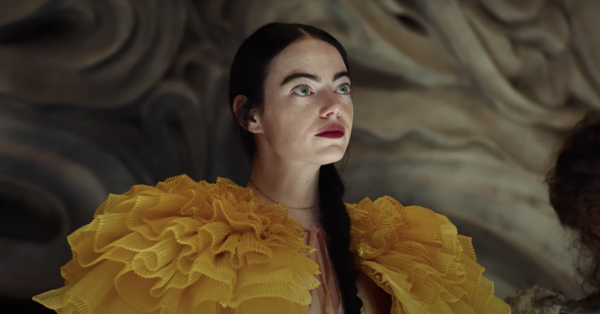The Miseducation of the Black Artist
Alvin Jackson, Contributor|June 27, 2020
A conscious collective movement for generational success
Throughout history, political movements have played a role in transforming the American exclusionary tactics of prejudice, war, and racism to microaggressive power dynamics. The effects of America’s exclusionary tactics are felt across all fields of employment. Art spaces are not exempt from this. Excluding Black artists from collections and exhibits create a lane for little room for them to find success in the field.
As the population changes in America, so have the historical implications of exclusion by denying to provide spaces for the Black artist to thrive and grow. One of the most prominent untold stories of the Bay Area is the miseducation of the Black artist through art institutions that have historically been places of exclusion and racism.
By the end of The Great Migration, Black artists were demanding space, respect, and visibility in art spaces. The Great Migration was the movement of six million Black Americans out of the rural south to the north, east, and west. African Americans left the South to find better job opportunities and a better life for their families. The anger and marginalization of the Black artist led to the opening of the first Black-owned art gallery in the nation located in San Francisco’s Haight district, The Black Man’s Art Gallery. The gallery was in operation from 1967 to 1975 and taught the importance of seeing yourselves fully represented in art galleries to more than seventeen thousand children in the City of San Francisco. Two generations later Black artists and collectives are facing the same issues while shifting the narrative of the Black artist.
The House of Malico is an Oakland based collective that produces free community programming under the many pressures faced by Black artists in the city of Oakland. According to a report done by the New York Times, the chances of you having a successful career as an artist increases by 10% if your household income is above thirty thousand a year. When comparing this with America’s economic practices, If you are Black and live below the poverty line your chances of having a successful art career are very slim. With the strength and support of their community, The House of Malico is in a unique position to change the statistic.
“We are a collective of primarily Black and People of Color,” Sasha Kelley of House of Malico said.
This puts the collective in a unique position to address the lack of diverse programming in art spaces that fuel the minds of the community spurring civic engagement. The makeup of this art collective allows the marginalization of Black and Non-Black to be explored allowing a new script to be written and contextualized through the lens of people who navigate the experiences themselves.
There is no single way Black artists can push back against the norms of art spaces because our lived experiences are so broad and vary in experiences. In order to begin decolonizing these spaces, the gatekeepers must recognize this and acknowledge it through art access and visibility. Dismantling racism by hiring Black people in art spaces and including their work in exhibitions will grant access to spaces that have systematically kept Black artists out of artistic contributions to society.
An example of this happened in the early seventies when artist and Bay Area legend, Evangeline Montgomery, formed Art West Associated North. The goal of the collective was to decolonize museums through art by bringing awareness to Black artists and their struggles. The Oakland Museum opened in 1969 during the height of the Black Panther movement. Black artists were nowhere to be found in the museum even though Black people made up nearly 80% of the population in Oakland.
Evangeline organized art shows in the Henry J. Kaiser center to showcase Black artists. Heading into the late 70s things began to heat up as the government started to crack down on social justice movements. Protests of the museum eventually went into a board meeting. The movement overwhelmed the museum board and eventually one commissioner resigned.
”Our narrative by default changes the notions of Black artists because our work impacts the lives of our many identities,” Kelley stated. An art practice rooted in lived experience speaks to the nuance of the lives of many Black people across the diaspora.
We see this through the artistic visibility of the Black artist through social media. The introduction of social media into the art space has leveled the playing field. It bridges the gap between visibility and lack of access.
“Art can go viral,” Kelley said.
Both go hand in hand when looking at the necessities of a successful art career. However, current trends tend to shy away from the fact that social media is a healthy outlet to share artwork. Social media blurs the creative process. Imposter syndrome is real and many artists have lost their lives to it. Social media shows us the constant need to produce takes a toll on artists. Materials cost money and when you’re not making money, producing art becomes a task and not a labor of love.
As times change and racial demographics shift, Black artists are using art as a tool of self-care in order to create a new context to create from that does not rely on the trauma of Black lives in America. America’s number one export is culture. The culture of violence and marginalization is fueled by the white supremacist ideologies of the West. Globalization has embedded America’s ideology into the fabric and it spreads through the ingraining of colonization efforts of the 18th through the 20th centuries. Today, we see both globalization and colonization play out in institutions across the world.
Museums are a product of the collections they sell. Money in the art world is concentrated on the very top of the one percent. That one percent is responsible for the push and pull of the global art market. The art market calls for art created by Black artists at the expense of their trauma. As history tells us, White people have used Black trauma to sell themselves a narrative they’ve been told their whole lives. Black lives don’t matter outside the context of an artistic aesthetic that can be exported and imported. Thus making America’s culture the number export.
“[As Black artists] we are connecting culture to traditional African practices,” Kelley said.
Millennial African Americans are obtaining degrees at much higher rates than the generation of African Americans before them. Education is the driving force behind the need to return to traditional African practices. Through education Black scholars have researched the reversible effects of colonization, one of them is dropping the ideologies of the West.
These actions are creating a global shift in the aesthetics of Black artists as well as the consciousness of the viewer. Acquiring art that does not include institutionalized racism would stop the tokenization of the Black artist and the experiences Black people face. Through the exclusionary models of art spaces, Black artists and art collectives have begun to create lanes of their own. The curatorial space has seen a rise in independent curators that create and form exhibits outside of museums.
Curators are people who design exhibits and make recommendations on acquisitions for museums. They are solely responsible for the reputation and notoriety of a museum. In order to be a curator, you need a master’s degree. Considering the reality and statistical evidence of educational observations, Black and Brown’s people are far less likely to obtain master’s degrees. Without diverse curatorial fields across the country, art spaces and museums will see a steep decline in revenue due to the artistic needs of the changing United States demographic.
The collective, Black Aesthetic, is using their passion for the arts and education to curate experiences that dissect Blackness through film. Many of the members are in college which creates a barrier for the group’s longevity due to life, time commitments, and the overall fast pace of the Bay Area. Gentrification and displacement is also a current theme in their successes and disadvantages as a Black film collective. Through it all, a desire to find each other has kept the collective afloat and moderately successful.
“Black artists already come with the knowledge of the struggle. Art spaces offer Black life through a binary,” Jamal Batts said. Showing the lives of Black people through a binary reinforces what many white people already know, Black people are suffering. Visualizing Black trauma through art reinforces their power while avoiding the guilt of their actions. “Independent Black Curators dictate the trajectory of Black artists and ultimately change the power structure,” he added.
The exclusionary nature of art spaces dates back to the 1920s and the Smithsonian’s executive director is a eugenics Scientist. His name is Charles D. Walcott and on many occasions, he requested President Woodrow Wilson to collect items on his excursions through Africa. The success of the Smithsonian has paved the way, internally and externally, for the tokenization of Black artists to be normalized.
A survey done by the American Alliance of Museum has shown that the most diverse departments in museums and galleries in the education department. This finding solidifies the fact that diverse staff rooms are the driving force for the sustainability of art spaces. However, this also shows the willingness of art spaces to tokenize the minds, not the artistic aesthetics, of Black people. However, as the art world shifts demographically and priorities change so will this statistic.
“Convergence of rap and sculpture coming together to bring notoriety to the craft and process Black artists use, Batts said”. Money from celebrities influences the way people view art. From that standpoint, artists have mentioned as a brand and not a concept of work. This creates a dialogue for the art viewers to engage through the context of rap music.
The Miseducation of the Black artist is ingrained in the foundational beliefs of the art spaces and institutions. The Eugenics scientist, Charles D. Walcott, laid the foundation for exclusionary practices to be perpetuated for centuries around the globe. Although Eugenics science has been repeatedly proven to be false, the foundational support of racism is evident in many ways. The microaggressions in art spaces and institutions are seen most evident in the decisions of art executives and board members who, through their decisions, empower patrons of art spaces to be exclusionary in practice.
The microaggressions are shown in invitations, exhibits, invitations to events, and collections. All four components are needed for Black artists to monetize their own artwork without the burden of representing the entire race through tokenization efforts funded by art institutions and spaces alike that inherently follow eugenic science.






